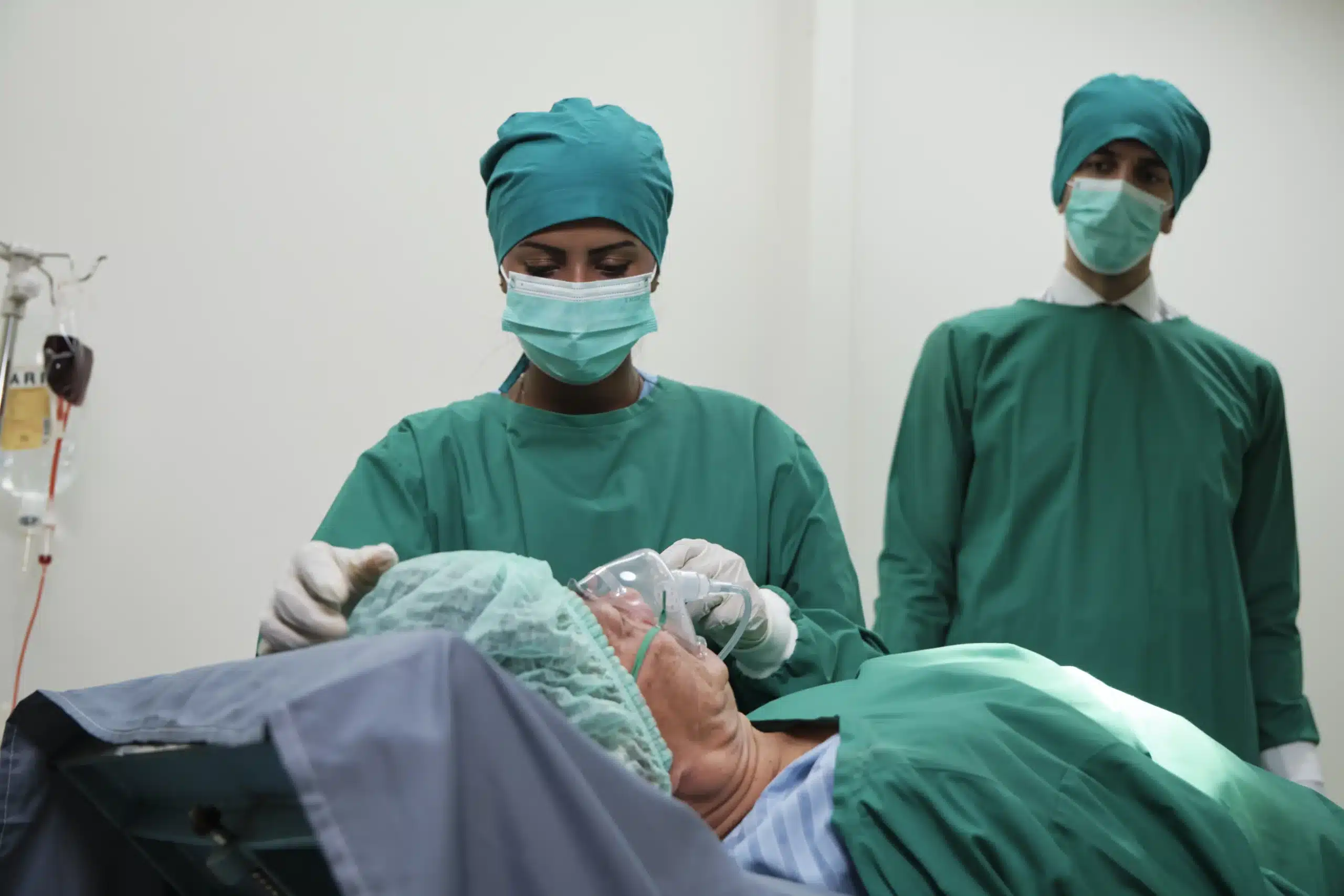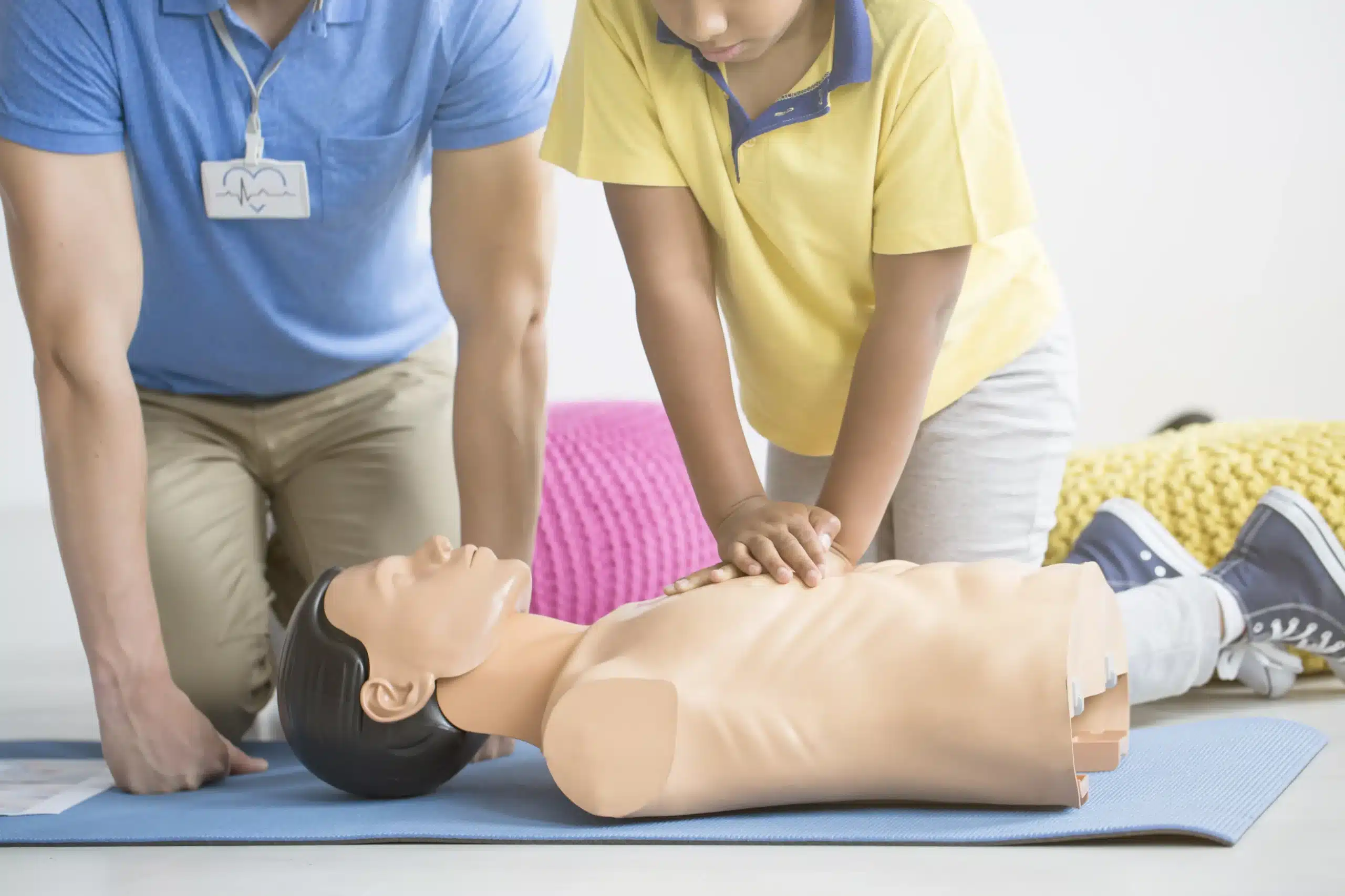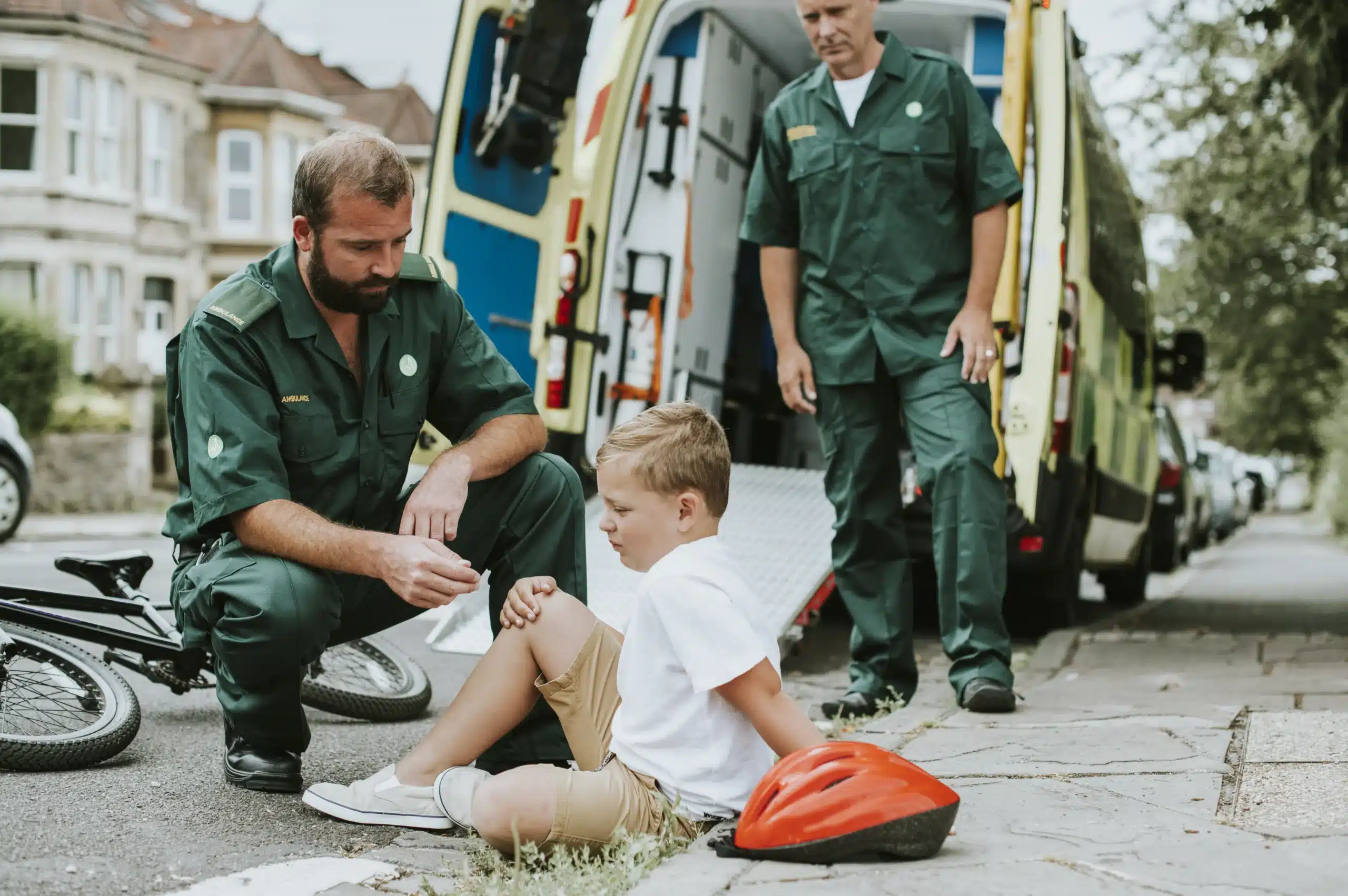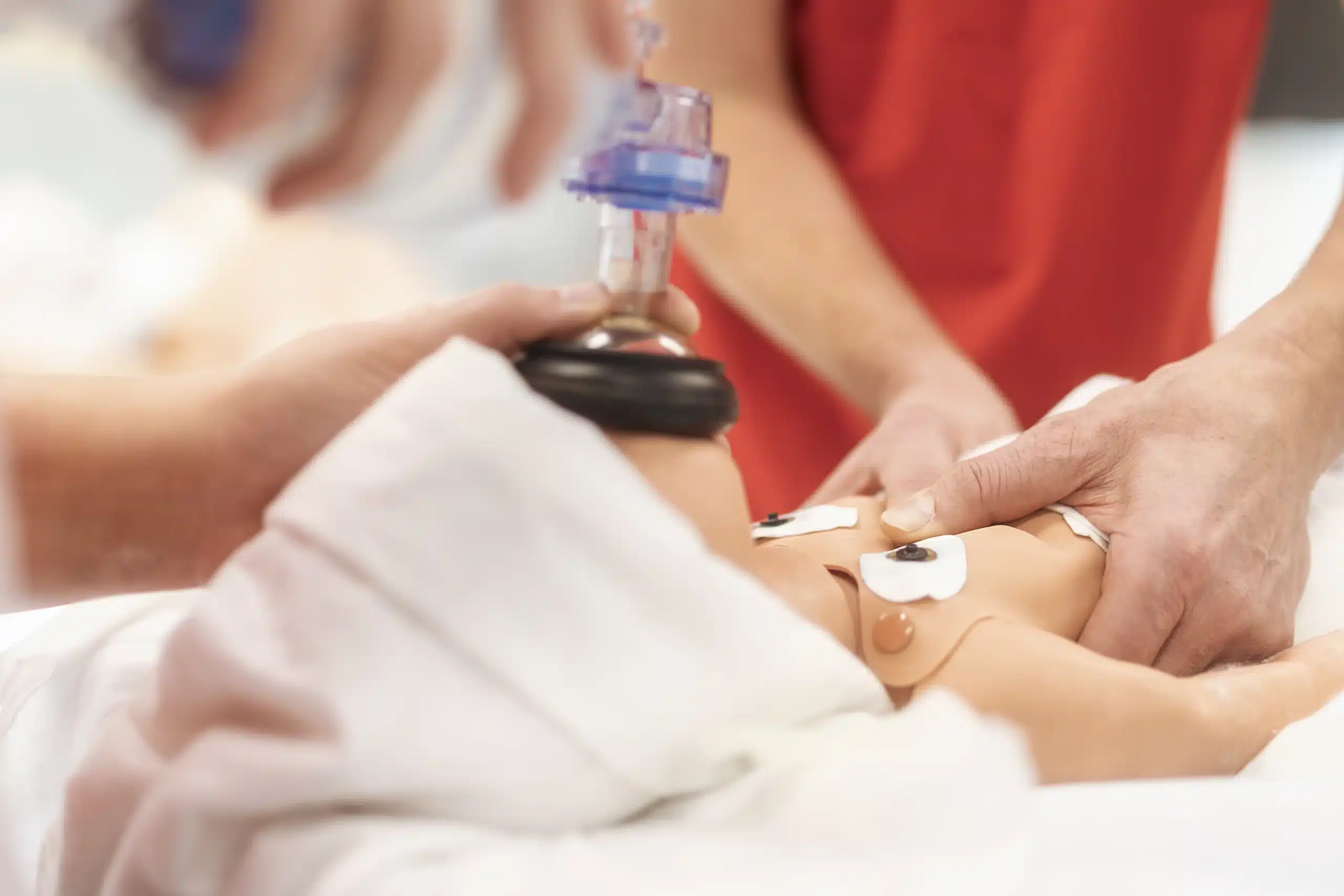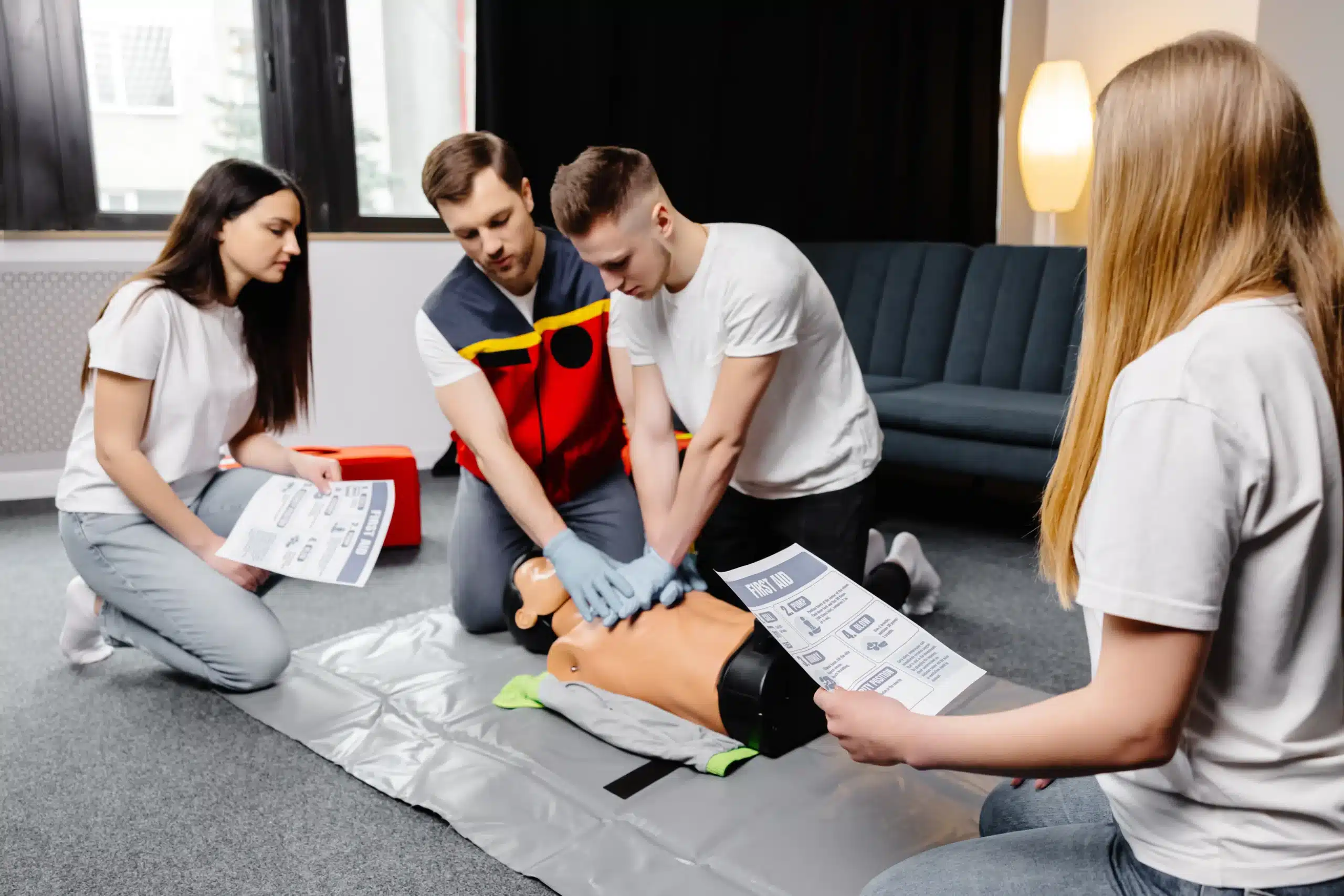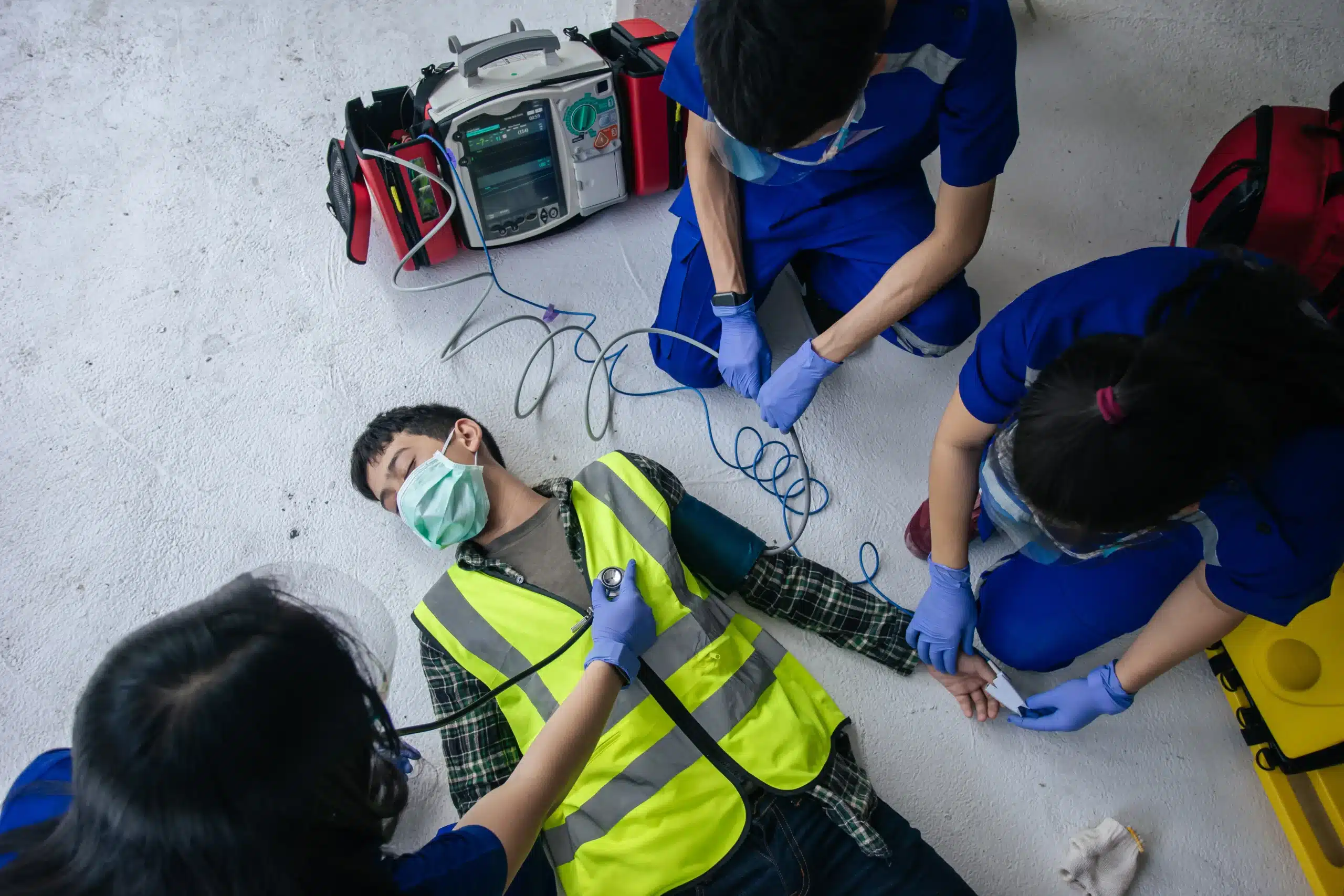Empowering yourself with life-saving skills is one of the most valuable things you can do. BLS certification provides the knowledge and training to respond effectively in medical emergencies, giving you the confidence to act when every second counts. This guide will answer all your questions about BLS certification, from what it involves to why it’s so important, and how to find ‘BLS certification near me’ to begin your training journey. We’ll cover the core components of BLS, the different types of training programs available, and the steps involved in maintaining your certification.
Key Takeaways
- BLS certification empowers you to save lives: Learning CPR, AED use, and how to recognize emergencies gives you the confidence to act when it matters most.
- Finding the right BLS course fits your needs: Explore local options, online resources, and reputable providers. Choose the format—in-person, blended, or online—that works best for you.
- Maintaining your BLS certification keeps you prepared: Renew every two years and stay up-to-date on the latest guidelines to ensure your skills are current.
What is BLS Certification & Why Do You Need It?
BLS certification validates your skills in providing basic life support, a crucial set of medical interventions used in emergencies. It signifies that you’re equipped to assist someone experiencing cardiac arrest, respiratory distress, or another life-threatening medical event. But it’s more than just a credential—it’s about empowering yourself to make a real difference. Let’s explore what BLS certification involves and why it’s so important.
What Does BLS Cover?
BLS covers a range of life-saving techniques, focusing on immediate intervention before advanced medical help arrives. These techniques include CPR, which helps restore blood circulation and breathing, and how to use an AED, a portable device that can shock the heart back into a normal rhythm. BLS training also teaches you how to recognize the signs of a medical emergency and provide initial care, such as clearing airways and providing rescue breaths. It equips you with the fundamental skills to stabilize a victim until professional medical help is available.
Why is BLS Important?
BLS bridges the critical gap between the onset of a medical crisis and the arrival of professional medical personnel. Those first few minutes are absolutely crucial. BLS training equips you with the skills to respond effectively, potentially stabilizing the victim and increasing their chances of survival. It’s essential for healthcare providers and valuable for anyone who wants to be prepared for an emergency. Knowing BLS can give you the confidence to act quickly and decisively when every second counts, whether at home, in the workplace, or out in the community.
How BLS Training Makes a Difference
BLS training isn’t just about memorizing steps; it’s about developing the muscle memory and critical thinking skills to apply those steps in a high-pressure situation. Hands-on practice builds confidence and competence, ensuring you can perform BLS effectively when faced with a real emergency. The ability to provide immediate assistance can drastically improve outcomes in these critical situations. Whether you’re a medical professional, a caregiver, or simply someone who wants to be prepared, BLS training empowers you to make a tangible difference in someone’s life. It provides the skills and confidence to respond effectively, potentially saving a life.
Find BLS Certification Classes Near You
So, you’re ready to get your BLS certification—fantastic! Now, let’s find the right training for you. Choosing the right training center is key to a positive and effective learning experience.
Where to Find Local Training
Start by searching online for “BLS classes near me” or “BLS certification [your city].” This will give you a good starting point for local options. Check community centers, hospitals, and fire departments, as they often host BLS training sessions. Don’t forget to ask your workplace or any professional organizations you belong to—they may offer training or have recommendations. For those in Morgan Hill, San Jose, or Gilroy, Morgan Hill CPR Classes offers a convenient option for local training. They provide a range of American Heart Association (AHA) aligned courses, including BLS, ACLS, and PALS.
Online Resources for Class Locations
Online searches can be incredibly helpful. Use reputable websites like the American Heart Association or the American Red Cross to locate certified training centers in your area. These sites often have search tools that allow you to filter by location, date, and course type. Online BLS courses themselves have also become a popular choice, offering flexibility for busy professionals.
Reputable BLS Training Providers
Choosing a reputable training provider is essential. Here are a few well-known organizations to consider:
Morgan Hill CPR Classes
Morgan Hill CPR Classes is a woman-owned AHA Training Center, offering a variety of courses, including BLS, ACLS, and PALS. They focus on providing high-quality training at affordable prices, with a low-price guarantee. They also offer discounts for group classes. Be sure to check out their course prep materials as well.
American Heart Association
The American Heart Association is a leading authority on CPR and emergency cardiovascular care. Their RQI (Resuscitation Quality Improvement) program is a popular choice for healthcare professionals seeking BLS, ACLS, and PALS certification.
American Red Cross
The American Red Cross is another trusted source for BLS certification courses. Their programs are designed for healthcare providers and other individuals who need to know how to perform CPR and other life-saving skills.
National Safety Council
The National Safety Council offers a range of safety training programs, including BLS certification. They emphasize workplace safety and emergency preparedness.
ProTrainings
ProTrainings offers online BLS certification courses that are convenient and self-paced. This can be a good option for those who prefer to learn at their own speed and on their own schedule.
Health & Safety Institute (HSI)
The Health & Safety Institute (HSI) provides comprehensive BLS training programs for healthcare professionals and first responders. They offer a variety of learning formats, including online and in-person classes.
Choose the Right BLS Training Format
Finding the right BLS training format depends on your learning style, schedule, and budget. Let’s break down the most common options so you can make the best choice.
In-Person Classes: Hands-on Learning
In-person BLS classes offer a valuable hands-on learning experience. You’ll work directly with an instructor and other students, practicing skills on mannequins and getting real-time feedback. This format is ideal for those who learn best in a traditional classroom setting and appreciate direct interaction and support. Organizations like the Red Cross use experienced instructors and a regularly updated curriculum. This ensures high-quality training. In-person training often incorporates local protocols, making the information relevant to your area.
Blended Learning: Online & In-Person Combined
Blended learning programs combine online learning with hands-on practice. You’ll complete the theoretical coursework online at your own pace, then attend an in-person skills session. The Red Cross offers this blended learning, giving you flexibility while still offering personalized instruction. This format is great for those who want more control over their study schedule but still value practical application.
Online Classes: Flexibility & Convenience
Fully online BLS certification courses offer maximum flexibility. You can complete the course from anywhere with an internet connection, making it easier to fit training into a busy schedule. This format is particularly helpful for those juggling work, family, or other commitments. Online certification also demonstrates initiative and professional development, which can benefit your career.
Factors to Consider When Choosing
When deciding on a BLS training format, consider your learning style. Do you thrive in a structured classroom, or do you prefer self-paced learning? Think about your schedule and how much time you can dedicate to in-person sessions. Finally, consider your budget, as costs vary. Review your options carefully to choose the best format for your needs. The most important thing is to get certified and be prepared. Check out this guide for more information on BLS recertification.
BLS Certification: Cost & Value
Getting BLS certified is an investment in your skills and ability to help in a crisis. Let’s break down the costs and discuss why this training is so valuable.
Typical Prices & Discounts
BLS certification courses typically cost between $70 and $100. Prices can vary, so check directly with your chosen training center for the most up-to-date information. Morgan Hill CPR Classes offers a low-price guarantee and often has special promotions. Look for discounts, especially if you’re registering with a group.
Invest in Life-Saving Skills
Think of BLS certification as more than just a certificate—it’s an investment in life-saving skills. This training gives you the knowledge and confidence to respond effectively in emergencies. As Cascade Training points out, BLS certification builds a strong foundation for providing immediate care during critical situations, potentially making all the difference. Knowing how to perform CPR, use an AED, and provide other essential first-aid techniques can truly save lives.
Group Rates & Financial Assistance
If you’re training a group, like workplace colleagues, explore group discounts. Many training centers, including Morgan Hill CPR Classes, offer reduced rates for group bookings. This can be a cost-effective way to ensure your team is prepared for emergencies. They offer daily classes in over 60 cities, making it easier to find a convenient time and location. Contact them to discuss group rates.
Maintain Your BLS Certification
So, you’ve earned your BLS certification—congratulations! Now, how do you keep it current? This section covers everything you need to know about maintaining your BLS certification, from renewal timelines to finding the right recertification course.
How (and When) to Renew
BLS certification is typically valid for two years. To stay certified, you’ll need to renew before your current certification expires. Check with your certifying organization (like the American Heart Association or the American Red Cross) for their exact renewal policy, but many require renewal within the last 30 days of your certification period. Don’t let your certification lapse—it’s much easier to recertify than to start from scratch. Many providers offer recertification courses designed for those renewing their credentials.
Stay Current with BLS
Healthcare is a constantly evolving field. Staying up-to-date with the latest BLS guidelines and research ensures you’re prepared to provide effective care in an emergency. Regularly reviewing updates from reputable sources, like the AHA, will help you adapt to any changes in protocols. This commitment to ongoing learning demonstrates your dedication to providing high-quality patient care.
Prepare for Recertification
When it’s time to recertify, consider your learning style, schedule, and budget. Do you prefer hands-on, in-person instruction or the flexibility of an online course? Explore different BLS recertification providers to find the best fit for your needs. Think about factors like class location, course format (in-person, blended, or online), and any available group discounts. Planning ahead and researching your options, including our tips on course preparation, will make the recertification process smooth and stress-free. We also offer a low-price guarantee, so you can be confident you’re getting the best value for your training.
Related Articles
- BLS Recertification Near Me: A Complete Guide – Morgan Hill CPR Classes
- BLS Training Near Me: A Practical Guide – Morgan Hill CPR Classes
- BLS Certification San Jose: Your Ultimate Guide – Morgan Hill CPR Classes
- BLS Renewal in Morgan Hill: A Essential Guide
- Find BLS Classes Near Me: Your Comprehensive Guide – Morgan Hill CPR Classes
Frequently Asked Questions
What’s the difference between BLS and CPR? CPR (Cardiopulmonary Resuscitation) is a specific technique used within BLS (Basic Life Support). BLS encompasses a broader range of skills, including CPR, using an AED, recognizing the signs of a medical emergency, and providing initial care like clearing airways. Think of CPR as one tool in the BLS toolkit.
How long does it take to get BLS certified? BLS certification courses typically take a single day to complete, whether you choose an in-person, blended, or online format. The exact duration can vary slightly depending on the specific course and provider.
Is online BLS certification accepted everywhere? Most employers and organizations accept online BLS certifications, especially those from reputable organizations like the American Heart Association or the American Red Cross. However, it’s always a good idea to confirm with your employer or licensing board to ensure the online certification meets their specific requirements.
How often do I need to renew my BLS certification? BLS certification typically needs to be renewed every two years. It’s important to keep track of your certification’s expiration date and plan for recertification accordingly.
What if I let my BLS certification expire? If your BLS certification expires, you’ll need to retake the full certification course rather than a shorter recertification course. It’s always best to renew your certification before it expires to save time and maintain your skills.
